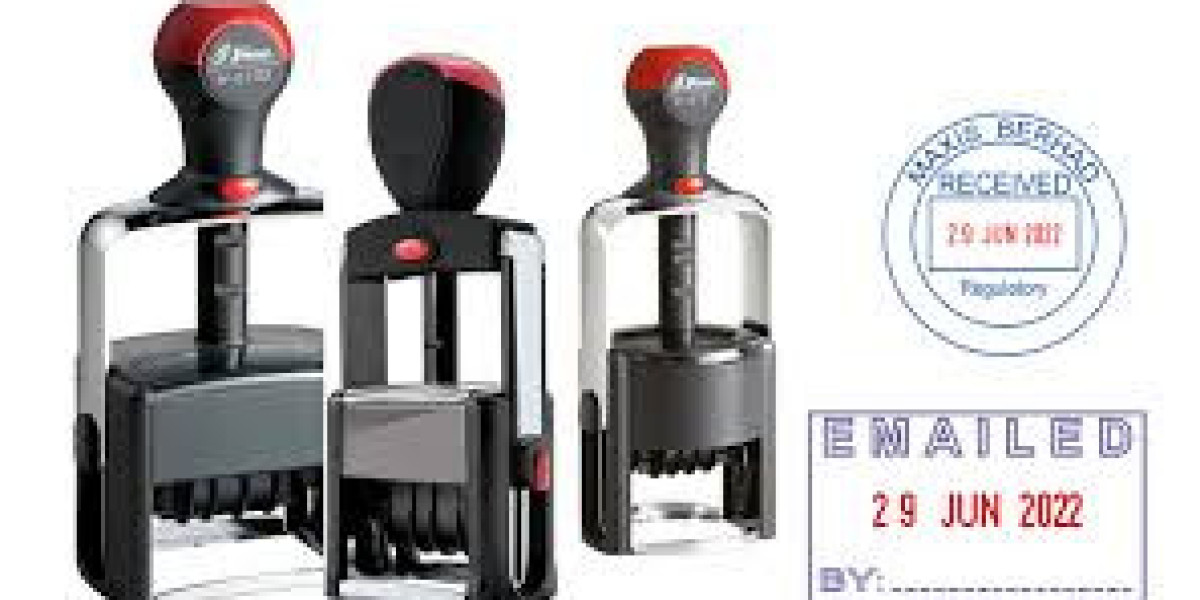Have you ever looked at a customisable stamp and wondered how people started using these tools in the first place? Today, stamps are common in classrooms, offices, and homes. They’re used to sign letters, grade papers, and decorate crafts. But the story of personalised stamping goes way back, spanning centuries of human history. People have always wanted ways to leave their mark, show ownership, or add a personal touch to documents and objects. From ancient seals pressed into clay to the modern self-inking stamps we see today, the journey of personalised stamping is full of interesting moments and changes.
Understanding how stamping evolved can help you appreciate the tool you might use every day without thinking twice. It also shows how the need for identity, communication, and creativity has stayed the same through time, even if the technology looks very different.
The Earliest Days: Seals in Ancient Civilisations
Long before rubber stamps, people used seals made of stone, metal, or clay. Thousands of years ago, Mesopotamians carved symbols onto small cylinders they rolled over wet clay to mark property or sign contracts. These seals weren’t just practical—they were also pieces of art. They often featured animals, gods, or patterns that showed a person’s status.
In ancient Egypt, officials used engraved signet rings as personal stamps. Pressing the ring into wax or clay proved that a message or order came from a particular person. These early stamps helped people protect their belongings and prove their identity.
As trade spread, seals became more important. Merchants used them to secure goods, mark shipments, and show that products were authentic. Even today, museums display these seals as symbols of early communication and business practices.
Stamping in Ancient China and Japan
In East Asia, seals became especially important. Chinese emperors, scholars, and artists used red ink seals called “chops” to sign paintings, poems, and documents. The tradition started more than 2,000 years ago and continues today. A seal carried deep personal meaning, often combining names, titles, or poetic symbols.
In Japan, a similar tool called a “hanko” or “inkan” became standard for official paperwork. Instead of signing their names, people used a stamp to confirm their identity on contracts, bank documents, or marriage certificates. Hanko are still required for many legal activities in Japan, making stamping part of everyday life.
Stamping Traditions Across Other Cultures
Stamping wasn’t limited to Asia or the Middle East. Ancient Greeks and Romans also used engraved stones and rings as seals. In medieval Europe, wax seals carried coats of arms or initials, closing letters with a sign of authenticity. Kings and nobles used stamps to issue decrees and mark property, making stamps powerful symbols of authority.
These early stamps shared a few things in common: they were unique, personal, and designed to protect against forgery. That’s the core of what makes stamping special, even in modern times.
Printing and the Rise of Hand Stamps
The invention of the printing press in the 1400s changed everything. Movable type allowed people to produce identical documents, books, and pamphlets. At the same time, the idea of pressing inked letters onto paper spread beyond large printing machines.
By the 17th and 18th centuries, small hand stamps started appearing in Europe. These early stamps were made of wood or metal. Shopkeepers used them to mark receipts, and officials used them to date documents. In many ways, they were the direct ancestors of today’s rubber stamps.
The Birth of Rubber Stamps
The invention of vulcanized rubber by Charles Goodyear in 1839 was a turning point for stamping. Vulcanization made rubber durable and flexible, perfect for creating stamps. By the 1860s, inventors began experimenting with rubber stamps that could reproduce text and images quickly.
Early rubber stamps were simple, often attached to wooden blocks with engraved rubber letters. Businesses found them incredibly useful for stamping dates, signatures, and payment confirmations on invoices. The stamps were faster than writing by hand, which made office work much more efficient.
Spreading into Homes and Schools
As the 19th century moved into the 20th, rubber stamps became common outside businesses. Teachers discovered stamps could make grading easier and more consistent. Parents used stamps for labels, and children enjoyed them for crafts.
Stamp makers started offering custom designs, letting people order stamps with their name, address, or favorite phrase. Suddenly, stamping became personal in a new way. The idea of a customisable stamp really took hold here, as it let anyone create a unique tool to match their personality or needs.
The Self-Inking Revolution
In the 1970s and 1980s, self-inking stamps changed the game again. Instead of using a separate ink pad, these stamps stored ink inside. Every time you pressed the stamp, it automatically re-inked itself, creating a faster and cleaner process. Offices loved them, and so did teachers, who could quickly stamp dozens of papers without needing a messy pad.
Self-inking stamps also made it easier to add logos, signatures, or detailed designs to documents. Over time, stamp companies developed better inks, clearer printing materials, and more reliable mechanisms. These improvements made stamps last longer and look sharper.
The Digital Age: Designing Stamps Online
The internet has transformed almost every part of life, including how we design and buy stamps. Today, you don’t need to visit a physical store to order a custom stamp. Websites let you upload logos, choose fonts, and select colors from your computer or phone.
Modern production uses laser engraving, which creates incredibly precise designs on rubber or polymer. These new techniques make it possible to include tiny details, like small text or complex images, on even the smallest stamps.
Online tools have also made custom stamps more accessible for individuals and small businesses. It’s never been easier to create a stamp for your classroom, wedding invitations, or homemade products. The customisable stamp is no longer just for big companies or government offices—it’s for everyone.
Stamping Beyond Paper
As stamping technology improved, people started using stamps on more than just paper. Fabrics, wood, clay, and even glass can be stamped with the right ink. Artists use stamps to add patterns to ceramics or clothing, while crafters decorate greeting cards and scrapbooks.
Businesses mark packaging and promotional items with logos or QR codes. Stamps have become an important part of branding, as they offer a handmade, authentic look that printed labels can’t always match.
Environmental Changes and the Modern Era
In recent years, stamp manufacturers have looked for ways to reduce waste and create more eco-friendly products. Recycled plastics, refillable ink cartridges, and water-based inks have become more popular. Many companies offer stamps that are designed to last for years, cutting down on disposable office supplies.
At the same time, digital signatures and paperless offices have changed how often stamps are used. But instead of disappearing, stamps have shifted to new roles—like personalizing gifts, marking handmade goods, or adding a creative touch to letters. For many, the feeling of physically stamping something still can’t be replaced by typing on a screen.
How Personalised Stamps Became a Creative Tool
Today, personalised stamps aren’t just practical—they’re also a form of self-expression. People create stamps with their pets’ faces, favorite quotes, or inside jokes. Couples design stamps for wedding stationery, and small business owners stamp their logos on thank-you cards.
For many teachers, parents, artists, and entrepreneurs, stamps are a way to show care and attention to detail. They turn something ordinary, like a piece of paper or a box, into something memorable. That human touch is what makes stamps special, even in a digital world.
The Emotional Side of Stamping
There’s something satisfying about pressing a stamp down and seeing a clear, crisp image appear. For kids, it can feel like magic. For adults, it brings a sense of accomplishment or nostalgia. Many people remember the excitement of earning a stamp in school or sending a letter with a personal seal.
In families, parents might use stamps to reward chores or mark milestones in scrapbooks. These little moments help create memories and traditions that last.
Stamps in Modern Businesses
While electronic signatures are common, many companies still rely on stamps for certain tasks. Official stamps can show that documents are approved, contracts are complete, or payments are received. In some countries, a stamped document carries legal weight, making stamps essential.
Businesses also use stamps as part of loyalty programs, like stamping cards for free coffees or discounts. Stamps are fast, affordable, and easy for employees to use, which is why they remain popular even as technology advances.
The Global Impact of Personalised Stamping
Stamps have traveled with people as they migrated, traded, or explored new lands. Different cultures adapted stamping to their own needs, from official seals in Europe to decorative block printing in India. Today, personalized stamps connect people across cultures. A teacher in the US and a shopkeeper in Japan might both use stamps to communicate with customers or students.
Stamps also support small businesses around the world. Many stamp makers are family-owned workshops that blend traditional techniques with modern tools. These artisans keep stamping alive as a craft and help others bring their ideas to life.
FAQs About the History and Evolution of Stamps
When did rubber stamps first appear?
Rubber stamps were invented in the 1860s after vulcanized rubber became available, making it possible to create flexible, durable stamps.
What are the oldest stamps ever discovered?
Some of the oldest seals date back over 5,000 years, found in Mesopotamia, where they were used to mark clay tablets and goods.
Why are stamps still used if we have digital signatures?
Stamps provide a quick, physical way to confirm approval or add a personal touch. Many people also find them more reliable for certain tasks.
Are personalised stamps different today than in the past?
Yes—modern stamps use better materials, precise laser engraving, and online design tools, making them more detailed and easier to customize.
Can I still get a traditional wax seal?
Absolutely. Wax seals are popular for weddings, crafts, and decorative letters. Many companies sell custom wax stamps with initials or logos.
Conclusion
The history of personalised stamping shows that even as technology changes, the need to leave a personal mark stays the same. From ancient seals pressed into clay to today’s customisable stamps ordered online, stamping has helped people prove identity, share creativity, and build connections across time and cultures. While digital tools continue to grow, stamps remind us of the value of something you can see, touch, and feel. They bring moments of joy and help us share a bit of ourselves with others. Whether you use them for grading papers, decorating gifts, or adding flair to your business, custom stamps carry on a tradition that’s thousands of years old—one stamp at a time.






